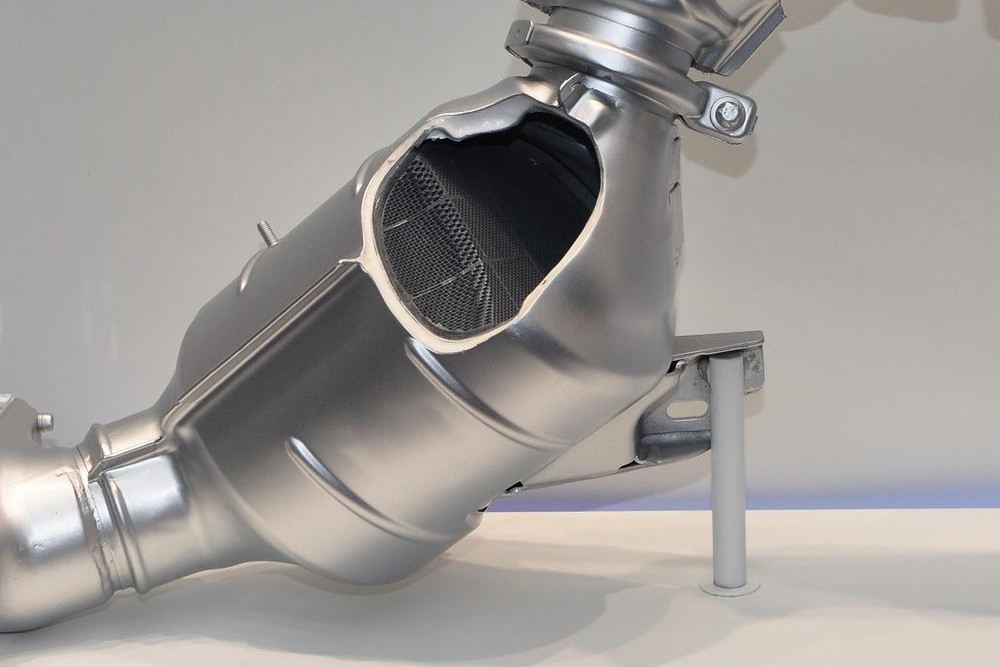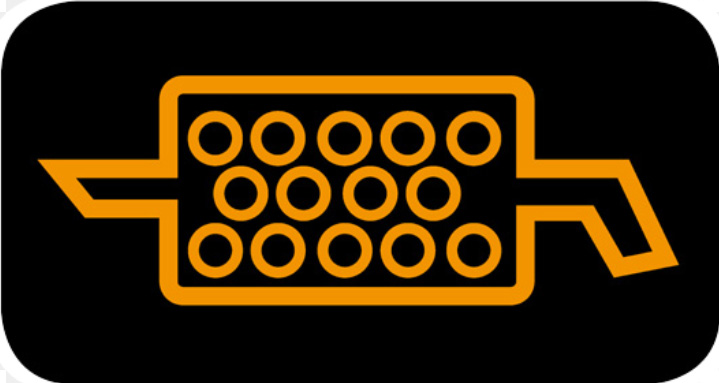The Truth About Modern Diesel Particulate Filter (DPF) Problems
If you are on the not-so merry-go-round of DPF near-death experiences, here’s everything you need to know to get you - and your vehicle - back on track
You know why they put the car dealership defibrillators in the service department? Well, if you want to find out, a good place to start is to own a Toyota Hilux diesel that needs a new particle filter. I’m lead to believe the replacement cost is north of $14,000. A quarter of the cost of a replacement brand new SR5. Outrageous. Oh, what a feeling...
I loves me a good diesel - so much low-rpm power. So breathtakingly frugal on fuel. So effortless for towing. So safe for refuelling in the bush, from a jerry can. I can see why people buy them.
Choosing petrol versus diesel >>
THE CASE FOR DPFs
DPFs - diesel particle filters - are a great concept. They take out the dangerously small carbon nanoparticles that diesel engines are so good at pumping out the exhaust port - trap them, and burn them into a parallel dimension through a wormhole in space-time. That’s the idea. Straight to the Phantom Zone - where they cannot give you lung cancer. Because nobody wants that.
In theory a DPF needs no maintenance - it’s just a steel chamber up near the engine full of Cordierite or silicon carbide designed to trap microscopic soot, and then periodically the computer turns the chamber into a furnace by injecting extra fuel, thus burning the particles into a less harmful state.
To quote the marketing euphemistic bullshit, DPFs are maintenance free and designed to last the life of the vehicle. So that’s good news.
Except - it often doesn’t work out that way. Many people are locked into an epically unpleasant ‘Groundhog Day’ experience where their DPF dies and is only intermittently resurrected, before dying again, and being resurrected. Kinda like Jesus on a treadmill, in a stainless steel casket, minus the cross and the miracle.
(That should be good for a comment or two.)
DPF DESIGN DEFICIENCY?
In fact a DPF, as a system, would have to be one of the dodgiest, least reliable systems on a modern car. Not because it’s a bad idea - it’s not. It’s a great idea. No lung cancer? I’ll take it. Have that wrapped and sent to my suite.
It’s a bad idea because it’s a bolt-on, after the fact addition. It’s a systematic ‘fail’. Like a guide to how not to integrate something new into a modern engine. And the engineers tasked with bolting this system on were handed a design brief that - apparently - included requiring all DPF-supporting systems to function perfectly until the end of time.
And ‘failure mode analysis’? It appears that this sounded like a bit too much hard work. If you are an engineer in a car company and you don’t like me saying this about what you’ve done, then I would humbly suggest:
Then of course we could add one of my favourite factors - dogshit-dumb dealers, inadequately trained on fault-finding and diagnosis, who charge like wounded bulls for their services, but wouldn’t know actual diagnosis if it jumped up and bit them on the arses. If you’re a car dealer and I am earning your opprobrium here, it’s merely because:
So if you’re in the dealership service department and your DPF warning light is on - for the twentieth time - on the least-merry merry-go-round ever - and you’re looking at a DPF replacement for several thousand dollars: Before you reach for the defibrillator, or the bat-pumpy - here’s what you need to know.
Thinking of stacking the deck in your favour? If you’re locked into a cycle of short trips with lots of cold starts inside the city or the ‘burbs, with no ability to escape and do a longer drive fortnightly, you might be better off in a petrol. Alternatively, not all DPF systems appear to be created equal - I never get complaints about Hyundai-Kia diesels (which seem to be pretty good at passive regeneration) and I rarely get them on Mazda vehicles, either.
My top recommended diesels:
I’ve also never had a DPF complaint about a Mitsubishi Pajero Sport >> or Triton >> or a Mazda BT-50 >>
SYMPTOM -Vs- PROBLEM
DPF blockage is a symptom, not a problem. Like a headache is a symptom, and drinking 14 bottles of tequila last night is the problem. Replacing the DPF usually doesn’t cure the problem - in fact, it could mean you’ll be back for another replacement in a few weeks-to-months if they don’t actually cure the problem.
You have to jump in the De Lorean, go back in time, and prevent your mother meeting your father, thus preventing the brain-crushing hangover you are experiencing today. It might be simpler than that - but only just.
DRIVING FOR REGENERATION
The problem could be as simple as: you didn’t go for regular highway drives you were supposed to. I’m talking 80km/h or above for a total of an hour or so, minimum, every fortnight. City driving is generally inadequate to allow a filter-regenerating burn.
A lot of people don’t know this, and of course the vermin who typically sell cars sometimes won’t hit you with this caveat - because it might get in the way of you actually buying it, which is their mission. Giving you a reason not to buy is unthinkable - the car salesman equivalent of kicking an ‘own goal’.
INLET AIR PLUMBING
But many people who experience DPF problems are actually doing more than enough requisite highway driving - so it’s often not that. It could be a problem with the inlet air plumbing - lots of DPFs fail this way. Subaru is almost famous for this. Volkswagen and Mercedes-Benz vans fail this way. So do the Ford Focus and Mondeo. And others.
See, a modern diesel is turbocharged, and that means the inlet air plumbing is pressurised between the turbo and the engine inlet. And there’s a lot of plumbing: hoses connect the turbo outlet to the intercooler inlet and then there’s a dirty big plastic elephant trunk thing in the case of Subaru - so there’s a lot of potential for inlet air leaks.
And you’re thinking: How can that kill my DPF? Well, grasshopper, the problem here is: the mass air flow sensor, AKA the MAF sensor. The MAF sensor measures the mass of air going into the engine, in real time. That’s important because the computer uses that information to determine how much fuel to inject.
Only two things go into your engine - air and fuel. And the ratio of the two needs to be bang-on. Measuring the mass of air makes sense because it self-corrects for pressure and density and the generally squishy properties of air. The mass is all that matters.
But if there’s a leak in the inlet air, downstream of the MAF sensor, because a hose gets a tiny crack in it over time, some of that air that the MAF sensor measures is not actually going into the engine.
And that means the engine will be over-fuelling, continuously, under boost, and that’s going to produce a whole bunch of additional carbon that will be like opening the Book of Revelation inside your DPF. That’s bad. Four tiny horsemen in there, wreaking carbon-based, end times havoc.
Induction leaks are real killers of DPFs - so if you are buying a used diesel car or SUV, it could be an entirely prudent idea to replace all the induction plumbing hoses as a pre-emptive strike against early DPF failure. Especially on the wrong side of 50-60,000km.
OVER-FUELLING
Over-fuelling is sometimes also caused by leaky fuel injectors - so I’d be getting a diesel specialist involved in the proposed purchase of any used diesel with a DPF - and not handing over the cash until there’s a clean bill of health from an expert.
RIGHT OIL
It’s also very bad to use the wrong engine oil. DPFs require a special low-ash oil - and there’s more than one grade of that, so make sure you get the oil selection exactly right for your car. Another way to kill your DPF with oil is via a leaky turbo oil seal. So I would absolutely not be letting those service intervals slide.
EGR & GLOW PLUGS
Sticky EGR valves are another DPF killer - pumping excess crankcase vapour into the exhaust. Faulty glow-plugs - also DPF-deadly - because they cause the engine to run too rich on start-up.
PRESSURE SENSOR
And then there’s the differential pressure sensor across the DPF - all that does is measure the pressure drop across the filter. That tells the control computer there’s enough soot built up to trigger a regeneration.
But if the plumbing to that pressure sensor gets clogged, the computer presumes no regeneration is necessary - even if the filter is in fact choking to death.
COMPLEXITY
I hope you can see that this is a complex system that, at times, to me, seems almost doomed to fail. And the failure is hardly ever intrinsically due to some deficiency in the DPF itself. The expiry of the DPF is just a symptom of a problem that could be very removed from the DPF. I mean, you wouldn’t automatically think to check your intercooler plumbing if your DPF is sick.
Confused about AdBlue? Get unconfused here >>
STRATOSPHERIC PRICING ... AND ONE SOLUTION
And then there’s the price - the price of genuine DPFs at dealerships is completely unjustifiable. In no way is it representative of the manufacturing and logistic costs of getting that filter on the shelf in the service department, plus a fair profit. It’s merely another a case of ‘grab your ankles and if you want lubricant, that’s extra’ at both carmaker and dealer levels.
Car dealerships are increasingly places where the service department is propping up an increasingly less profitable new car retailing operation. Jack says ‘hi’ to you car dealers on this, too.
Yes - DPFs generally do have a catalyst in them. There’s maybe $200 worth of that (because only trace amounts of precious metals are employed) and maybe $20 to manufacture the rest from stainless steel. $3000 to $14,000 recommended retail price - you’ve got to be kidding, right?
Add a couple of grand for diagnosis and labour - it could easily be more than a used car is worth. Absurd and extortionate. And yet, even the price is a ‘bad news/good news’ story.
The one positive thing about these extortionate dealership practices is: It’s opening the door to non-genuine DPF replacements at a considerable saving. I recently caught up with Charles Anderson - a guy who saw this situation as an opportunity and now imports into Australia a steady stream of non-genuine DPFs.
Mr Anderson says he can provide replacement common DPFs inclusive of catalyst etc, for retail prices between $900 and $2100. This is a considerable saving over what the dealership was going to charge you. You can check his operation out at DPFsales.com.au >>
Charles Anderson told me he’s happy to be contacted if you have any DPF-related questions or problems. He knows a lot about this stuff.
DELETING THE DPF?
It sounds so tempting. I know. Here’s a few reasons not to do that:
One: Lung cancer. We probably shouldn’t need any more reasons than that. But just in case you’re slow on the uptake:
Two: It’s illegal. And we do live in environmentally sensitive times. I’m lead to believe fines for DPF deletion are up to about $11,000 for individuals and double that for corporations. So there’s that…
Three: There’s a guarantee that you just voided your warranty if you delete your DPF - as well as any other vestigial consumer law-style protections. So if your engine blows up and the dealership discovers a deleted DPF, this is their get out of gaol free card on your consumer claim.
And, four: You can’t just remove a DPF. Engines do not run without them. Cowboy deleters might have to do some creative re-coding of your engine control computer. (Some computers can be set to ‘DPF off’; some cannot.) I’d be very careful about the whole cowboy re-coder thing - because there’s a good chance the engine won’t run entirely satisfactorily afterwards.
And, of course, if that re-coding comes with an armful of additional kilowatts and Newton-metres, this could play havoc with your driveline durability - refer to what I said earlier about warranty and consumer law claims there…
CONCLUSION
Remember: In general, replacing the DPF is not a solution to your DPF problem - unless it also includes investigation into the root cause of the problem and the rectification of that.
In general, just replacing the DPF will lead to just replacing the DPF again - in a few weeks to months. And nobody wants that - even though plenty of people do it. Often the dealership will be ill-equipped to solve your DPF problem. They are generally fairly crap at diagnosis
Were I you, on the dreaded DPF merry-go-round - I would look for an independent diesel specialist with runs on the board with DPF diagnosis. It’s not rocket science ‘down there’ - but it is a bit complex for your average dealership Muppets who think taking orders from a scan tool is the same thing as being a mechanic.





















Toyota has raised the Corolla and called it a small SUV, one that offers reliability, practicality and even performance atop the range. Let’s see if there are any redeeming features that can justify the $50K price?